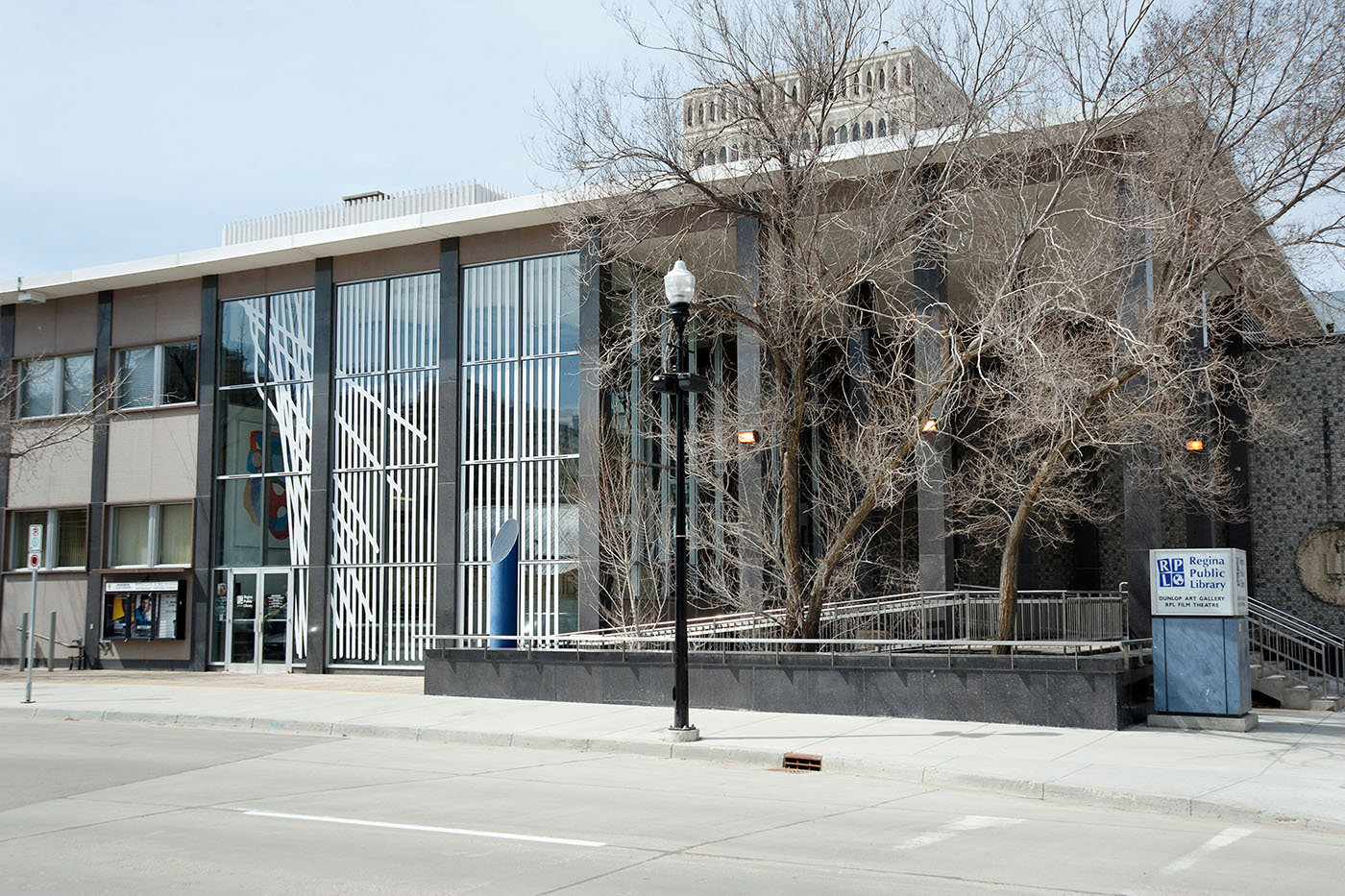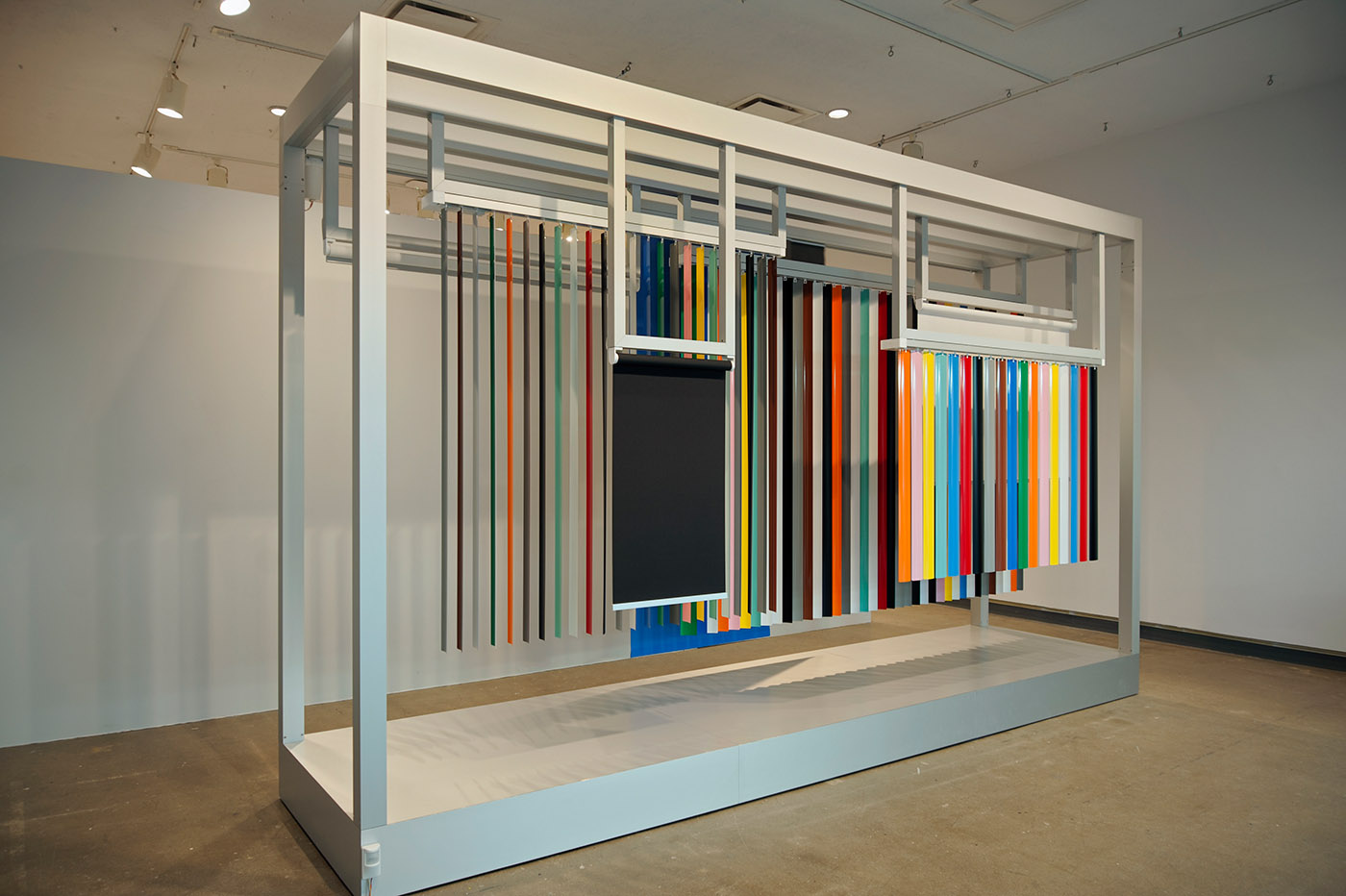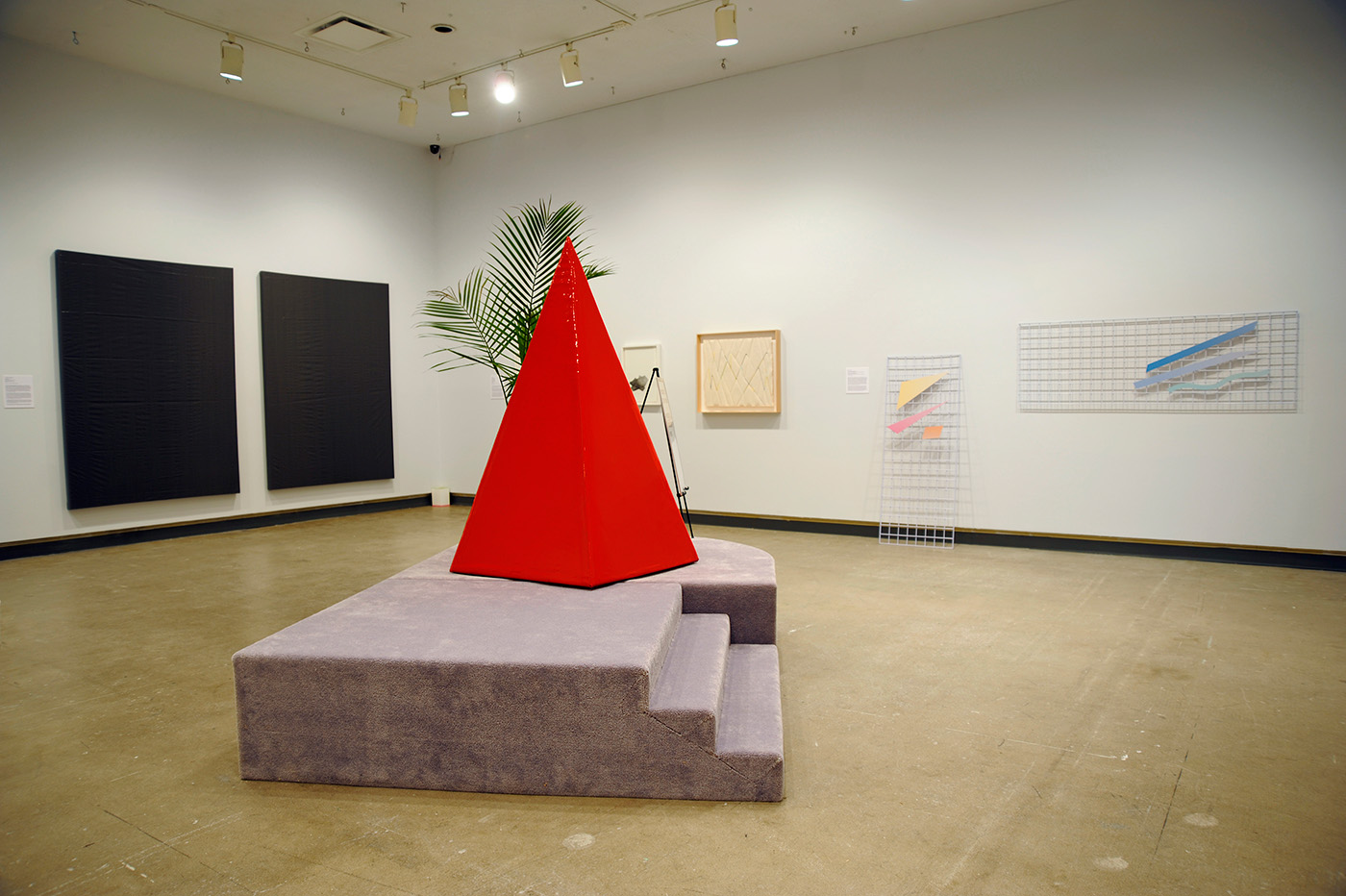The Dunlop puts a contemporary and feminist twist on modernism

The success (and failure) of Modernism is not being passionately refuted so much as recast by contemporary artists to suit contemporary ideas. Any ideas of an eternal, utopian relevance are long vanished when considering the works in the Dunlop Art Gallery’s current exhibition Who’s Afraid of Purple, Orange and Green? But, utopias are implicitly stagnant, and I prefer the lively debate of this show. With artists like Krista Buecking, Arabella Campbell, Jessica Eaton, Marie Lannoo, Jennifer Marman and Daniel Borins, Luce Meunier, Sarah Nasby, Sasha Pierce, Jennifer Rose Sciarrino and Celia Perrin Sidarous, the show is both “modern” and overdue.

Curated by the Dunlop’s director Jennifer Matotek, the exhibition’s premise looks both backwards and forwards, and brings together new works by artists from across Canada who utilize formalist aesthetics in ways that take new conceptual, narrative and aesthetic turns. The formalist aesthetics of the modernist movement of the 1960s, which influenced many Saskatchewan artists via the Emma Lake workshops, are being reconsidered by female Canadian artists at various stages of their careers – an interesting phenomenon given that women artists were largely excluded from the intellectual discourse at the birth of the movement.
A previous exhibition curated by the gallery’s assistant curator Blair Fornwald presented Tammi Campbell and Marc Courtemance. Artifice factors in both their practices, and Campbell contrasts a reverence to modernism (Frank Stella, for example) and an almost comical play on the indispensability of masking tape to Emma Lake-style late geometric modernism.
I spoke with Matotek prior to the opening of the exhibition about how the show came together, the feminist undercurrents in the artworks selected, and how female artists are contributing to modernism’s legacy.
Bart Gazzola (BG): What was the genesis for this show? How do the multi-faceted aspects of contemporary feminism feed into the show, and how does that mirror the contradictory and historically unsure notion of modernism on the prairies? And, do you feel that being new to the Dunlop allows you to see more clearly, or has it been a negotiation where you’re attempting to understand and explore a chapter of art history that is sometimes more revered than relevant here?
Jennifer Matotek (JM): The show was motivated by several factors. Initially, the seed was planted during studio visits I was doing in Toronto shortly before I left to move here. I kept seeing, over and over again, artists returning to the aesthetics of formalism, and to a lesser extent, minimalism. Most of these Toronto artists happened to be female.
Further research and reading confirmed this impulse was not isolated. It was happening everywhere in the contemporary art world, for better or for worse – it was getting written about in Artforum, Flash Art, October. What struck me about everything I read was that people were still fixated on using work by male artists as examples. This feels wrong to me. What new and important things could straight, white male artists have to say about the legacy of modernism in the year 2014? I would posit that it’s much more interesting to consider how female, Aboriginal, and queer artists are responding to these legacies, particularly since artists with these identities were largely excluded from modern art discourses during the birth of these mid-20th Century movements. (Agnes Martin being one of only a handful of women who are very interesting and important exceptions.)

BG: A thoughtful statement from a fellow curator and writer is the idea of “confrontational homages to modernism”, and how contemporary painters are employing this. How does this sentiment fit within your exhibition?
JM: That definitely fits with several works – in particular, Krista Buecking, who, curatorially, I would position in the show as an artist who is performing a kind of antagonistic modernism. In her work, she actively examines hierarchies and structures. In the WE THING pieces in this show, she is particularly critical of consumerism, conservative economics, and capitalism in general, in part by using objects – most notably a large red, shiny triangle sculpture – as stand-ins. I would argue that her work really does point out the ridiculousness of a lot of things we revere in the contemporary, using aesthetic cues that I would argue point back to the mid-20th Century, subtly asserting that period may be the source of many of our current problems.
Other artists in the show who are somewhat confrontational in their homage to modernism are Jennifer Marman and Daniel Borins. They actively question the idea that art-viewing can ever be a flat, static process, and their Pavilion of the Blind, as a continually moving kinetic sculpture that is meant to be seen as a modernist painting, is also in some sense more antagonistic.
But, other works in the show are more reverential to modernism – pieces by Jessica Eaton and Luce Meunier, for example. I would almost categorize them as deferential to modernism. I don’t mean that in a pejorative way, but positive about its historical legacy.
Celia Perrin Sidarous takes the modernist notion of ‘visual language’ and plays with it, to create a kind of poetry using the medium of photography. Sasha Pierce’s painting, I’d argue, sits nicely in the middle between the spectrum of being deferential and antagonist. While there are a lot of principles in her work that are consistent with the goals and aims of modernism, there’s a lot about her process and style that just really don’t fit with the aims of mid-20th Century art movements.
BG: So, this is more of a conversation, or an argument, in a positive sense, than any kind of all-encompassing declaration on the state of modernism, as it was/is?
JM: Really, my goal with this show was to present a myriad of responses to modernist legacies, rather than tying it down to a singular idea. The only real threads that bind a lot of them together are: they’re all Canadian, all women and many of them use media that weren’t employed as often in the middle of the 20th Century, like prints, photography and kinetic sculpture. If there’s one aesthetic element they all seem to defy, it’s that edict on airlessness – nearly all of the works are about using, taking up or compressing space in some manner. This is, to me, very interesting because women are told all the time by society to be small and not take up very much space.
Who’s Afraid of Purple, Orange and Green? runs at the Dunlop Art Gallery in Regina, Saskatchewan until June 20, 2014.
Bart Gazzola has published with Canadian Art, BlackFlash (where he was Editorial Chair for three years), Magenta, PrairieSeen, Galleries West, FUSE, Hamilton Arts & Letters and was art critic at Planet S for over a decade. Also host & producer of The A Word, he currently lives in St. Catharines, Ontario, after nearly two decades on the Prairies.
Arabella Campbell art Celia Perrin Sidarous Dunlop Art Gallery installation Jennifer Marman and Daniel Borins Jennifer Rose Sciarrino Jessica Eaton Krista Buecking Luce Meunier Marie Lannoo modernism Sarah Nasby Sasha Pierce women



